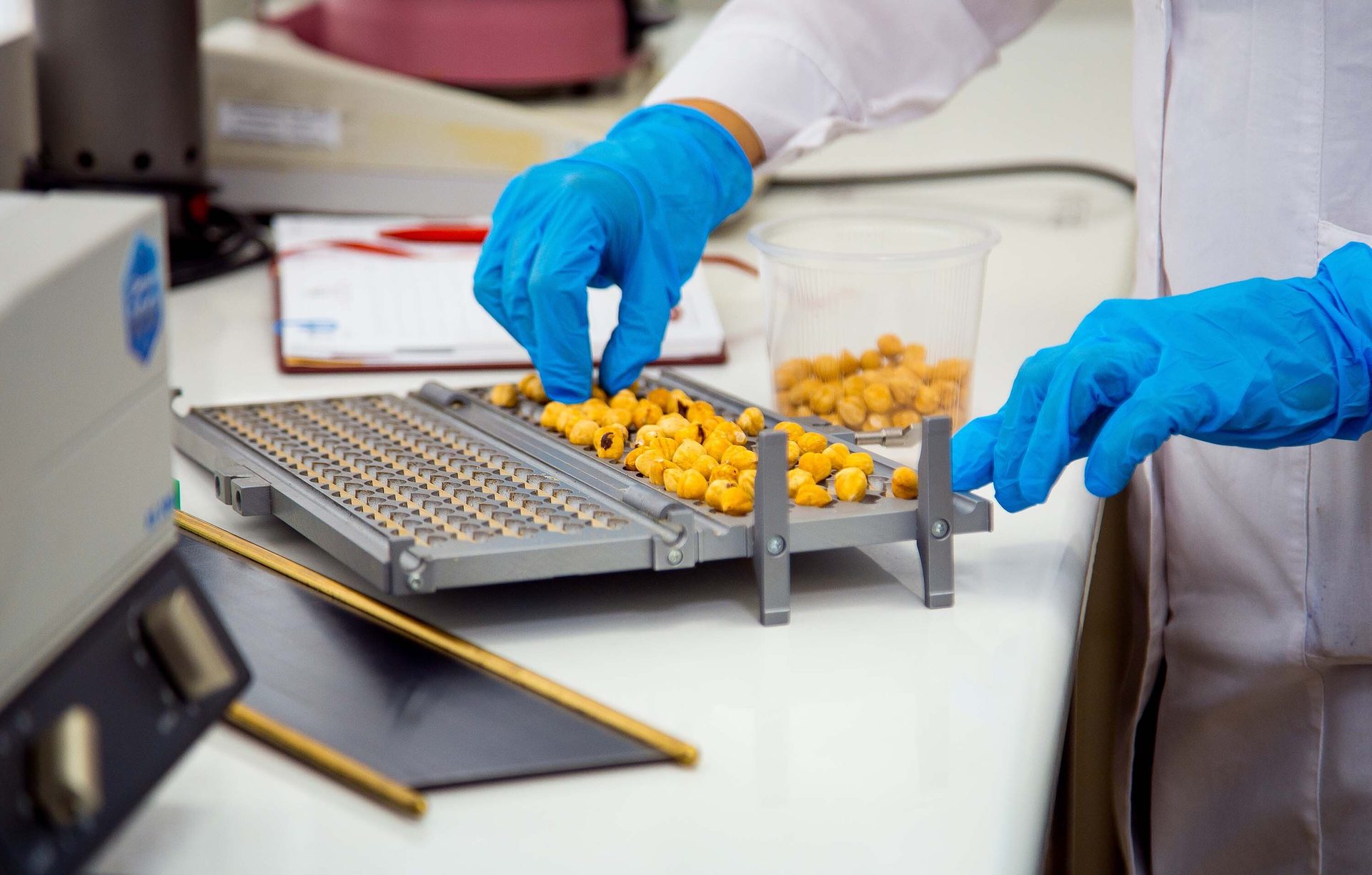BACK TO BASICS
By Richard F. Stier, Consulting Food Scientist
Fundamentals of a Retain Sample Program
A retain sample program ensures that production samples from each lot of product manufactured are retained onsite

Image credit: Oksana Kuznetsova/iStock/Getty Images Plus via Getty Images
SCROLL DOWN
Many different elements make up food quality and safety programs for food and beverage processors, produce growers and handlers, and ingredient manufacturers. Programs vary depending on the products being produced, the type of packaging, and the company itself. One of these is a retain sample program.
At first glance, such a program seems simple and straightforward. The processor collects product samples from each item being produced at regular intervals during production and stores them for future reference. A retain sample program ensures that production samples from each lot of product manufactured by the company are retained onsite. These retain samples ("retains") allow the company to evaluate any customer complaints, conduct checks for quality, and provide samples to evaluate in the event of a recall. Some operations use their retain program to evaluate whether products are holding up in storage. When the product reaches its established shelf life, the retained samples may be removed from storage and paneled by the quality group.
Example Retain Sample Program
A retain sample program may be set up as shown in the following example, geared toward a processor manufacturing shelf-stable foods:
- During production operations, the labeling and casing supervisor shall remove three samples at set intervals from each production run. Three samples shall be collected at the beginning, middle, and end of each production run.
- Each sample will be labeled with the date of production using indelible marker or a pre-printed label.
- The samples shall be placed in cardboard boxes, which shall also be labeled with indelible marker or a pre-printed label. Labeling shall include the product, the date the samples were placed in storage, and the date the products will be removed.
- The boxes shall be placed in the storage rack designated for retains. This rack is located in the shipping area and has been labeled appropriately. The retain sample area shall be secured and accessible to designated personnel only.
- The shipping supervisor shall maintain a log book of all samples in the storage rack. This log may be electronic or hard copy.
- Samples shall be kept for the shelf life of the product, plus one year. The shelf life of each product will be maintained in a master file.
- If there is a consumer complaint or any other issue pertaining to a product, then the appropriate retains shall be removed by management and tested. Any work that is done shall be documented.
This protocol may seem fairly simple, but there are a number of questions that must be resolved when establishing a retain sample program. One issue is storage. A high-volume production facility with many different product lines will need to designate enough space to hold the retain samples. This is especially true with shelf-stable products like canned foods, which have a long shelf life.
Small processors, many of whom face space challenges, must carefully plan how they will manage their retain program. I have seen how some operations have tried to meet these challenges, and I have not always agreed with their methods. As an example, one company kept retains in refrigerators used to store ingredients. The best practice, which is highlighted in the example, is that the retain area be designated only for retains, and be properly secured and accessible by authorized personnel only.
Shelf-Life and Legal Considerations
Another issue that a processor must address is how long the products should be kept beyond their established shelf life. In the example above, for a shelf-stable product, the protocol says "shelf life plus one year." Companies do this because products may remain on the shelf beyond their "best by" or "sell by" dates, or they may sit in someone's pantry for a long time. Look in your own pantry and check whether you have items that extend beyond these dates. A company that processes items with a short shelf life, such as deli meats, may keep retains for only a few days beyond the "best by" date. Companies must determine how much time beyond the shelf life the retains will be kept.
“The quality and safety group is responsible for properly documenting sample disposal, including any test results that are generated.”

A company's legal department may add pressure with regard to how long retain samples are kept. Food processors generally retain processing, quality, safety, and sanitation records for set periods and then destroy them. Once the samples are destroyed per policy, they cannot be subpoenaed. This holds true for retain samples. Once retains are removed from the designated area and tested or destroyed, they are no longer accessible to being examined if there is a legal challenge.
The retain storage area is clearly not a stagnant operation. New samples will be added daily and, ideally, old samples will be removed at the same time. The questions to ask are: "Will they be removed and destroyed?" or "Will they be taken to the lab and evaluated?" The quality and safety group is responsible for properly documenting sample disposal, including any test results that are generated.
When setting up a retain program, the quality and safety team should understand that if an illness or injury issue is reported, the results may not be accepted by regulators—even if the retains test negative. However, having the samples to demonstrate the quality and safety of the product could end up being a boon to the processor, as they may be able to provide evidence of lot safety and quality.
Collecting Retain Samples
How retain samples are collected may also be a challenge. There are no real issues with retail products; these can be collected from the line, as described in the example. Consider, however, the juice processor packaging aseptic juice in drums or totes, or the ingredient suppliers providing their clients with bulk ingredients like totes of frozen vegetables or tree nuts. With these types of products, the company must develop a system whereby it can withdraw sub-samples at the time of packaging. With aseptic products, the processor often installs a sample port that allows it to collect product without contaminating the sample or the product that is in processing. The processor must develop, document, and implement a sampling procedure that details how to collect the sample, including precautions that must be taken to prevent contamination.
Keep in mind that during a Class I recall, the samples being retained can be used by regulators to determine if they contain the offending issue. The samples may also be used to determine if the company may be legally liable for not having taken the appropriate actions prior to commercial distribution.
Establishing a Retain Sample Program
The big question is, "Do we really need to establish a retain sample program?" One option to answer this question is to seek advice from the food safety and quality group in the trade association that represents your industry. Is it a program that industry segment experts consider important? There does not seem to be any real consensus in industry, so it is really up to individual processors. Do you believe that a retain sample program adds value and enhances your food safety management system (FSMS)? That is the real bottom line, because one element of an FSMS is continual improvement. You must always strive to improve. Operations that accept the status quo are like a shark that stops swimming. Sharks must continue to move forward to force water through their gills; if they stop, they sink to the bottom and die.
Processors wanting to set up a retain sample program must consider a number of elements including how to collect samples, how many samples will be collected, how and where the samples will be stored, how long they will be held, how they will be evaluated, potential legal issues, and how they will be disposed of. All of these actions and pieces of information must be properly documented.
Retain programs can be useful for assessing the quality of a product lot over its shelf life, or detecting where a failure may have occurred within a production lot. However, they are generally ineffective at proving that all units in a lot were safe. Even if the product is homogenous prior to packing, it may be impossible to demonstrate that "safe" testing results from the first, middle, and end retain samples prove that every other unit of product was also safe. However, the evidence provided by retains can be a plus on your side in the event of an issue or dispute. This is both the challenge, and fallacy, of testing samples to try to prove that other samples were safe.
References
- BBC. "Confusion may have led to Costa allergy death—inquest." August 13, 2024. BBC News. https://www.bbc.com/news/articles/c77lr0ellddo.
Richard F. Stier, M.S. is a consulting food scientist who has helped food processors develop safety, quality and sanitation programs. He believes in emphasizing the importance of how these programs can help companies increase profits. Stier holds degrees in food science from Rutgers University and the University of California at Davis. He is also a member of the Editorial Advisory Board of Food Safety Magazine.

